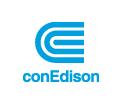| Con Edison Steam System County of Manhattan New York, USA  PDF Summary PDF Summary |
For 130 years, Con Edison has had the privilege of being the energy service of choice to many of New York’s most prominent and unique properties. The Company’s plan is to continue to provide Steam Service to customers by maintaining the current high reliability and operational excellence on production and distribution, incorporating technological advancements into the system, optimizing system efficiency, pursuing new opportunities for productivity, performance improvements, and cost reductions, and by bringing additional value to the customer base. The Con Edison Steam System has earned several prestigious awards and recognition in recent years which include the USEPA Energy Star Combined Heat and Power award for East River Stations’ Units 1&2 for significant energy savings (2009) and two IDEA Awards for “Best System of the Year” in 2000 and 2007. In addition, the Company has received recognition for carbon disclosure and reduction. The Con Edison Steam System, being the producer of steam and electric in the Company, was a major contributor to these reductions. In 2011, Con Edison placed first among utilities in the S&P 500 Carbon Disclosure Leadership Index, was the only utility listed in the S&P 500 Carbon Performance Leadership Index, and was #1 Utility in Newsweek Green Rankings. Con Edison’s steam facilities are operated and actively monitored to reduce regulated pollutant emissions. A significant district energy benefit of this remote and controlled emission is the removal of any air quality issues for development or renovation. Situating a stack and accounting for dispersion of flue gases for onsite boilers can restrict both the property served and any surrounding development. In Manhattan, this is a significant concern. By using steam, customers benefit from better building aesthetics (e.g. no flues, cleaner facades), there’s more rentable space for building owners, there are no stationary engineers or licensed boiler operators required for high-pressure operations, and building owners avoid boiler operating expenses (labor, service contracts, chemical costs, water treatment, and maintenance). Funds that would be diverted to these functions can be directed toward tenant service instead. In 2012, 64% of steam supplied by Con Edison was produced using cogeneration technology, which resulted in the avoidance of 430,000 tons of CO2 that would have been otherwise produced from conventional electric generation and non-cogenerated steam generation. |
